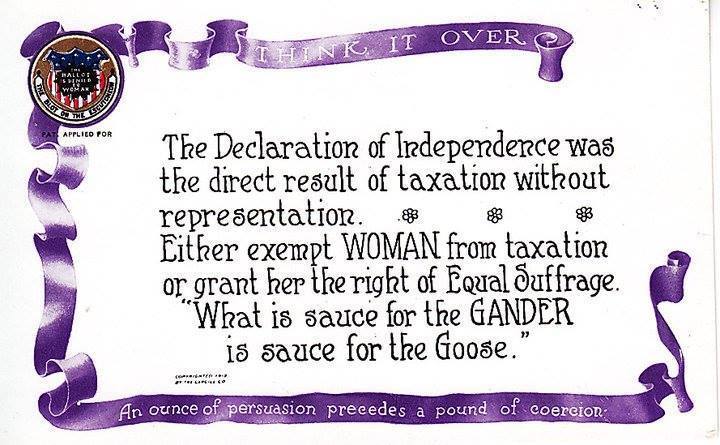
Today in Feminist History is our daily recap of the major milestones and minor advancements that shaped women’s history in the U.S.—from suffrage to Shirley Chisholm and beyond. These posts were written by, and are presented in homage to, our late staff historian and archivist, David Dismore.
December 21, 1912: Day six, and already half way!
Since neither General Rosalie Jones nor any in her suffragist army do things half way, it’s now clearly a matter of “when” and not “if” they finish the Bronx to Albany march and deliver their pro-woman-suffrage message to New York Governor-elect Sulzer.
Although just putting the first half of the trek behind them would have been enough to raise everyone’s spirits, the day was wonderfully exciting and warmly supportive as well from beginning to end. (This is just what General Jones needs, because she’s under great pressure from her mother to come home, but also quite dedicated to “The Cause” and assuring that she and her troops finish the journey.)
Today’s events started at 6 a.m., when Captain and Chief Orator Jessie Hardy Stubbs went to the Sweet, Orr & Company overall factory in Wappingers Falls to talk to the workers. She’d hardly had time to climb up on a workbench to begin speaking when the Superintendent came over. “This will never do at all,” he proclaimed ominously. But just as she was about to go into verbal combat mode, he said: “They can’t hear you.” He then had every piece of machinery silenced, and said: “Now go ahead.”

She did, and apparently the employees could hear her quite well, because fifteen minutes later, 32 of the workers had been inspired to accompany the hikers to the day’s objective of Poughkeepsie.
Passing near the Gallaudet Home, the marchers received a salute of support in sign language from some residents who had walked several miles to see them. At the home of the Kirks all were invited to enjoy hot doughnuts and cool milk. But it was the reception at Poughkeepsie that really made the day. The sidewalks were crowded with spectators as a line of local suffragists, wearing yellow suffrage ribbons, led a parade through town. Behind General Jones and her loyal troops was Mary Lynch, a local resident, carrying a large American flag, followed by the overall factory workers, with the baggage car, as usual, to the rear, and several hundred locals trailing it.
At their hotel the hikers were met by more local suffragists, as well as the mayor. He confessed to having been an “anti” six years ago, but has since been converted. It was his view that a wise political party would be on the side of woman suffrage. He also endorsed the suffrage army’s method of travel: “You never would have aroused such enthusiasm or had the chance to speak in the places you have if you had adopted the more conventional method of carrying the message,” he correctly noted.
It’s snowing tonight, and an 18-mile journey to Rhinebeck lies ahead tomorrow. But despite the prospect of a very tough day ahead, the suffrage army gained a recruit tonight. Gladys Coursen, age 18, will be Poughkeepsie’s contribution to the effort, and march the rest of the way to Albany.





